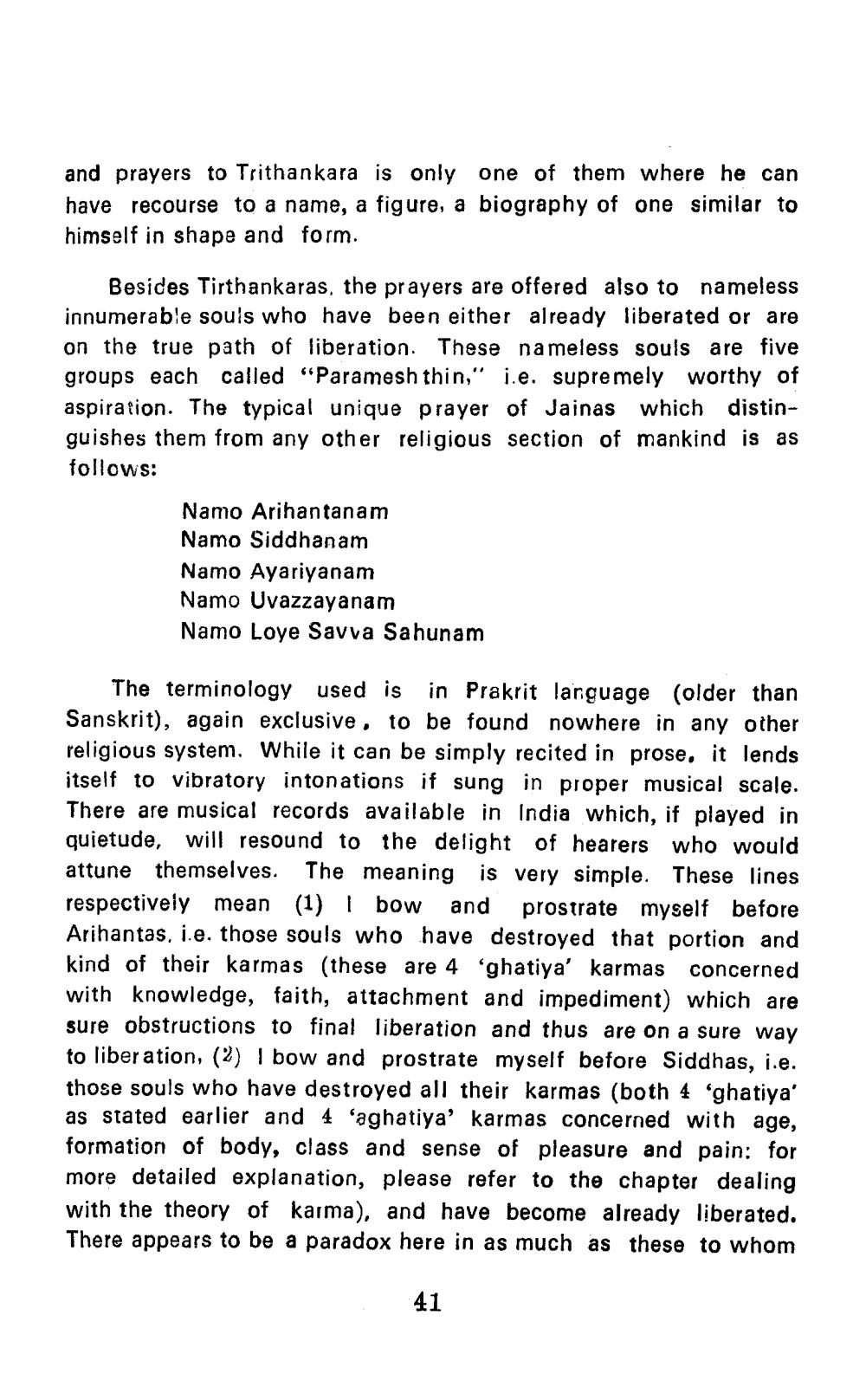________________
and prayers to Trithankara is only one of them where he can have recourse to a name, a figure, a biography of one similar to himself in shape and form.
Besides Tirthankaras, the prayers are offered also to nameless innumerable souls who have been either already liberated or are on the true path of liberation. These nameless souls are five groups each called “Paramesh thin," i.e. supremely worthy of aspiration. The typical unique prayer of Jainas which distinguishes them from any other religious section of mankind is as follows:
Namo Arihantanam Namo Siddhanam Namo Ayariyanam Namo Uvazzayanam Namo Loye Savva Sahunam
The terminology used is in Prakrit language (older than Sanskrit), again exclusive, to be found nowhere in any other religious system. While it can be simply recited in prose, it lends itself to vibratory intonations if sung in proper musical scale. There are musical records available in India which, if played in quietude, will resound to the delight of hearers who would attune themselves. The meaning is very simple. These lines respectively mean (1) I bow and prostrate myself before Arihantas, i.e. those souls who have destroyed that portion and kind of their karmas (these are 4 'ghatiya' karmas concerned with knowledge, faith, attachment and impediment) which are sure obstructions to final liberation and thus are on a sure way to liberation, (2) I bow and prostrate myself before Siddhas, i.e. those souls who have destroyed all their karmas (both 4 'ghatiya' as stated earlier and 4 aghatiya' karmas concerned with age, formation of body, class and sense of pleasure and pain: for more detailed explanation, please refer to the chapter dealing with the theory of karma), and have become already liberated. There appears to be a paradox here in as much as these to whom
41




